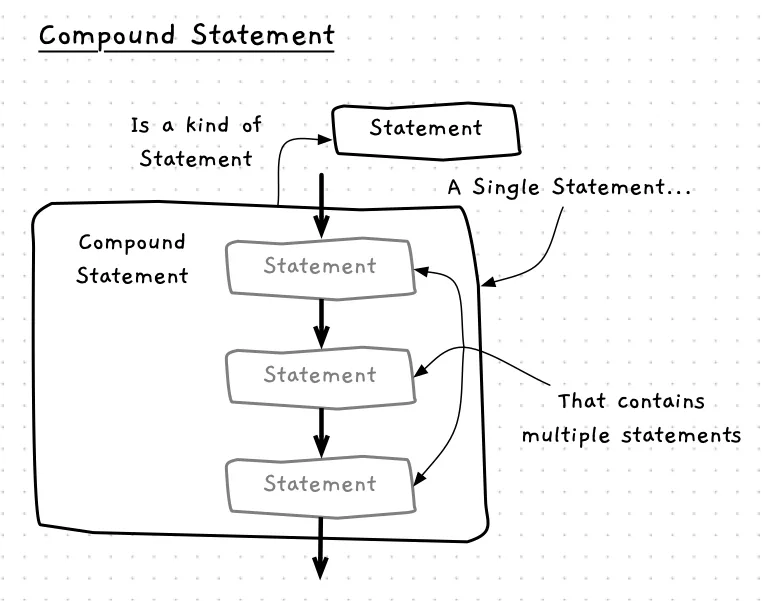Compound Statement
Before we explore control flow statements we need to make a small detour to see one new statement that programming languages use to simplify their syntax. This is a compound statement — one statement that is actually a grouped list, or block of statements.
Programming languages will typically define control flow statements as only being able to control the flow of a single instruction. This is quite limiting. However, with compound statements we are able to bypass the limitation, by using a compound statement where this single instruction is expected. This allows us to write control flow statements that actually alter the flow of more than one instruction.
Have a look at the following figure to see a visualisation of this idea.

Compound Statements — when, why, and how
You will use compound statements regularly within control flow statements. It simply provides you with a way of clearly showing which statements belong within the group, and then embedding that group within the flow of control.
In C#
In C# you use curly braces ({...}) to bring together a list of statements. The group starts with the open brace ({) and end with the closing brace (}), with everything in between the two braces being part of the group. There are no restrictions on how many statements can be in a compound statement.
Example
You can use compound statements anywhere in your code, such as in the following example.
using static System.Console;
WriteLine("Statement 1");
// The next 4 lines are all part of the one compound statement{ WriteLine("In the compound statement - statement 2.1"); WriteLine("This would be statement 2.2");}
WriteLine("Statement 3");There isn’t any reason to do this though — compound statements really make the most sense when combined with the control flow statements.